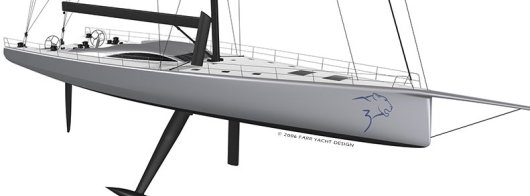



The super maxi (racing yachts under 100’ or 30m) are increasingly popular and as more yachts are launched the competition gets better. Super maxis are raced in all the large worldwide yacht events from the Fastnet to the Sydney to Hobart to the Middle Seas race.
LEOPARD 3 is a racing sailing yacht, as launched in 2007. She is a new concept for a 100ft super maxi from Farr Yacht Design. LEOPARD 3 meets the demanding requirements of a luxurious, signature charter yacht, as well as a passage record breaker and a race winning super maxi in a fantatic new concept developed by Farr Yacht Design.
Racing maxi ‘Maximus’ is definitely the latest and most impressive super maxi to ever appear on the world stage. She may even represent one of the biggest design leaps in all monohull yachting. The name comes from Maximus' unbridled maximum power to weight ratio. Maximus is quite a step forward in design and technology in the world of yachting and when compared to other super maxi designs (notably Zana/Conical Minolta & Scandia). This is perhaps not surprising given the project mission – To design, build and successfully race the world’s fastest and most innovative monohull under 100 ft with adherence only to the rules of science and experience. There are no class rule handbrakes here!
Why is Maxims set to be the fastest thing afloat and beat every other monohull she mixes with? Simple really - her team. She has the best possible design and building team, willing and extremely capable owners and a fantastic sailing crew. As with anything, if you want to do something great you need to gather around great people. EBS Yachting (Maximus) has achieved this without compromise.
Every now and then in history you can get a congregation of amazing people in one area and place – a class of genius. The Maximus team is comprised of perhaps the most outstanding individuals and companies in ocean yachting in the world. As it turns out they are almost all New Zealanders. Anyone heard of Greg Elliot, Clay Oliver, Chris Mitchell, Southern Spars, North Sails, Cookson Boat Builders? Why not throw in a nuclear physicist/innovator and a very successful race campaigner and businessman as the owners, into the mix!
At her launch Maximus was dressed in modernist silver and measured in at 100 feet or 30.5 meters in length overall, weight unknown. She made quite an impressive sight. In the words of Stewart Thwaites who was there (the owner, campaigner and racer of super maxi Konica Minolta): “It just looks beautiful really…”. The old adage in Aeronautics that ‘if the plane looked good to the eye, she would fly well’, perhaps rings true here with yachting also.
The key with making a yacht fast is high power to weigh ratio, achieved with strategic weight distribution, high righting moment and low weight, yet strong materials. When righting moment is high, more horse power can be designed into the rig and sails. The hull, spars and sails therefore need to be light and the bulb on the keel deep and heavy. Class rules traditionally hamstring a designer from the challenge of taking design and technology to its full potential. This is not the case with Maximus. Throw in a streamlined, easily driven hull and a skillful crew and you have all the ingredients for speed.
Weight to power ratio and righting moment has been maximized in Maximus by an extremely frugal addition of weight throughout all parts of the yacht. The hull and much of the equipment and fittings are completely composed of carbon. So too are the spars – the mast could be lifted by one very well balanced Scottish caber tosser! Further weight is stripped down with the absence, rather alteration, of some fittings normally found on yachts, such as cleats and many usually conventional winches – the luff is tensioned down rather than pulled up with a halyard. The winches that are used are also made from carbon. Add to this a revolutionary rotating mast (the first for a monohull) for more efficient use of the wind (and less drag) and a keel which telescopes into itself and cants to a larger angle than ever before.
Perhaps unexpectedly, safety has not been compromised is favour of performance alone. Crash bars have been fitted in strategic places (carbon fiber off-course) and the hull has been designed, by Greg Elliott, with higher than necessary top sides to minimize the crew’s exposure to fast moving deck wash. Maximus is fully equipped with safety gear, has a strengthened canting keel and is able to function completely manually, without auxiliary power. It is not hard to understand why the team has a particular emphasis on safety and prudence as they are in uncharted territory in yachting with respect to boat speeds and pressures.
The Velocity Prediction Analysis suggests that Maximus will smash speed records with her long straight lines, low drag, high righting moment, maximum power to weight ratio, efficient and huge sail area, rotating mast, and extra canting keel. Add to this an excellent managerial and sailing team and she is likely to not only find racing regatta line honors but dissolve opponent’s spirits in her wake in the process.